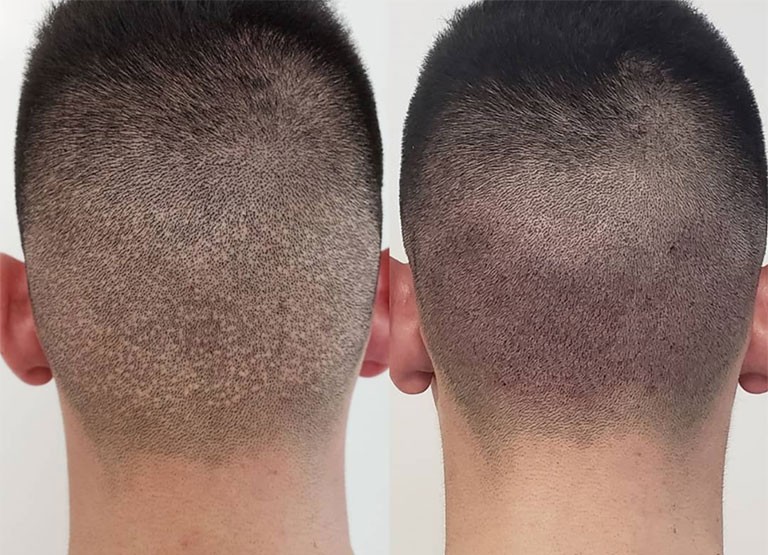Hair transplant surgery has become an increasingly popular solution for those struggling with hair loss. While the procedure is generally safe and effective, one of the most common concerns people have is: “Will there be scarring after a hair transplant?” In this comprehensive guide, we’ll explore everything you need to know about hair transplant scarring, the types of procedures and their impact on the scalp, and what you can do to minimize or manage scars post-operation.
Understanding Hair Transplant Scarring
Hair transplant surgeries involve removing hair follicles from a donor area (usually the back of the scalp) and implanting them into the recipient area (typically areas with thinning or no hair). Since this involves incisions and tissue manipulation, some degree of scarring is almost inevitable. However, the type and visibility of the scar depend largely on the technique used.
Types of Hair Transplant Techniques and Their Scarring Potential
- FUT (Follicular Unit Transplantation) – Strip Method
In FUT, a thin strip of scalp is removed from the donor area. The individual follicular units are then dissected and transplanted.
Scarring Outcome: This method usually leaves a linear scar across the back of the head.
Visibility: The scar can be hidden under longer hair but may become visible if the hair is cut short.
Risk: Poor closure technique or stretching of the scalp can result in a wider scar.
- FUE (Follicular Unit Extraction)
In FUE, individual follicular units are extracted using a tiny punch tool.
Scarring Outcome: Leaves behind tiny circular scars where each follicle was removed.
Visibility: These are generally less noticeable, especially with short hair.
Risk: Overharvesting or large punch sizes may increase scar visibility.
Factors That Influence Scarring After a Hair Transplant
✔️ Surgeon’s Skill and Technique
An experienced surgeon using advanced tools and techniques will significantly reduce the risk of noticeable scarring.
✔️ Skin Type and Healing Characteristics
Some people naturally form thicker or more visible scars due to their genetics or skin type (e.g., keloid-prone individuals).
✔️ Post-Operative Care
Proper aftercare is essential. Scratching, sun exposure, or infection can worsen scarring.
✔️ Number of Grafts and Sessions
The more grafts taken and the more sessions performed, the greater the potential for cumulative scarring.
How to Minimize Hair Transplant Scars
✅ Choose the Right Surgeon
Selecting a qualified, board-certified hair transplant specialist with a strong portfolio of before-and-after photos is critical.
✅ Follow Aftercare Instructions
Avoid strenuous activity for at least a week
Keep the scalp clean and dry as instructed
Avoid scratching or picking at the scabs
✅ Use Scar-Reducing Products
Silicone gels or sheets
Vitamin E oil
Topical scar creams as recommended by your doctor
✅ Consider Scalp Micropigmentation (SMP)
SMP is a non-invasive cosmetic tattooing technique that creates the illusion of hair follicles, helping camouflage visible scars.
What to Do If You Already Have Noticeable Scarring
If you’re concerned about existing scars from a previous hair transplant, there are several options to improve their appearance:
Scar Revision Surgery – A surgical procedure to minimize or remove old scars.
Laser Treatments – Can reduce redness and improve texture.
Hair Transplant into the Scar – In some cases, hair follicles can be re-implanted into the scar to make it less visible.
Microneedling with PRP – Helps remodel scar tissue and improve scalp health.
Frequently Asked Questions (FAQs)
❓ Is FUE completely scarless?
No, FUE is minimally invasive, but it still leaves tiny dot-like scars. These are generally not visible unless the hair is extremely short.
❓ Can hair grow over the scar?
Sometimes yes, especially if the scar is not too thick. In some cases, grafts can be implanted into the scar tissue to encourage growth.
❓ Will the scars fade over time?
Yes, in many cases, scars can fade significantly over the months and become barely noticeable, especially with proper care.
Final Thoughts
While some level of scarring is a natural outcome of hair transplant surgery, modern techniques and skilled surgeons can minimize the extent and visibility of these scars. Whether you’re considering FUT or FUE, understanding the potential for scarring—and how to manage or prevent it—can help you make a more informed decision and achieve the most natural-looking results.
If you’re planning a hair transplant or dealing with the aftermath of one, consult with a trusted specialist who prioritizes both results and patient care. A successful hair restoration journey is not just about regaining hair—but also confidence and comfort.

Bir yanıt yazın